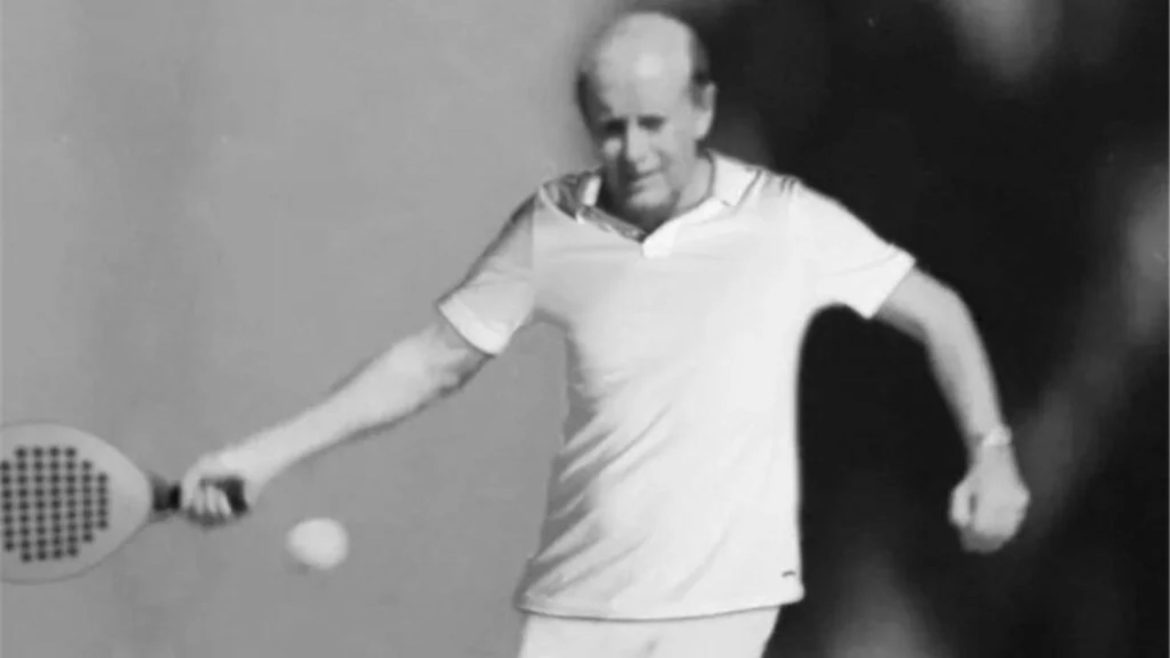Padel, a fast-growing racket sport, is now played by millions of people around the world. Yet few know the true origins of this fascinating sport. At the heart of this story is Enrique Corcuera, the man often forgotten but undeniably crucial to the development of padel. This article explores the life, contributions and legacy of Enrique Corcuera in the world of padel.
The Origins of Padel: An Original Idea
Enrique Corcuera, a Mexican entrepreneur and athlete, had the idea to create padel in 1969. At the time, he was looking for a way to have fun at home with friends and family. With no suitable tennis court on his property, he decided to design his own game using the space and resources available, and built a small court surrounded by walls and fences at his home in Acapulco. The court was around 20 metres long and 10 metres wide, dimensions that are still used today. Enrique Corcuera created the first rules of padel, taking inspiration from tennis, squash and even handball to create a unique sport.
The Fundamental Rules of the Game
Padel, as conceived by Enrique Corcuera, is an intelligent blend of several racket sports. Here are some of the basic rules of the game:
- The court is smaller than a tennis court, with walls on which the ball can bounce.
- The serve is diagonal, like tennis, but below the waist.
- Points are also counted in the same way as in tennis: 15, 30, 40 and game.
- The rackets are solid and perforated, without strings, which makes them unique compared with other racket sports.
- Padel is generally played in doubles, although singles matches are also possible.
The Initial Spread of Padel
Thanks to his connections and social circle, Enrique Corcuera quickly popularised padel in Mexico. Among his close friends was Alfonso de Hohenlohe, a Spanish aristocrat with a passion for the sport. Enthused by this new form of the game, Alfonso took the idea to Spain, where he built Europe’s first padel court in Marbella in the early 1970s. This was the starting point for the expansion of padel in Europe, first in elite circles and then gradually among the general public. The sport became increasingly popular, attracting fans of all racket sports.
Padel’s European heritage
The introduction of padel in Spain marked the beginning of the sport’s rise on the European continent. Today, Spain is considered the cradle of padel in Europe, with thousands of courts and tens of thousands of active players. National and international tournaments are organised every year, attracting players of all levels, and the cultural impact of padel is undeniable, with leading figures such as Fernando Belasteguín and Alejandra Salazar becoming icons of the sport. The popularity of padel in Spain has also served as a springboard for its expansion into other European countries such as France, Italy and Sweden.
Global impact and growth
Beyond Europe, padel is experiencing rapid growth in other parts of the world. Countries such as Argentina, Brazil, the United States and even some Asian countries have enthusiastically embraced the sport. Padel federations are multiplying, and international standards have been standardised, thanks in large part to the foundations laid by Enrique Corcuera. Padel also benefits from a strong presence on social networks and in the media, making it easier to discover and engage with new audiences. International competitions, such as the World Padel Tour, receive extensive media coverage, attracting new fans and sponsors.
Constant Innovation in Equipment
Another facet of Enrique Corcuera’s legacy is the constant evolution of padel equipment. From rackets to balls to footwear specially designed for padel courts, every element has seen significant technological improvements. Sports equipment companies such as Bandeja Shop now offer a wide range of high-quality products, tailored to the needs of players of all levels. Research and innovation in materials and designs have resulted in lighter, stronger rackets that offer better control. These technological advances have not only improved players’ performance but have also made the sport more accessible and enjoyable for beginners.
The Values and Ethics of the Sport
Since its origins with Enrique Corcuera, padel has always promoted the values of conviviality, fair play and team spirit. Unlike some more competitive sports, padel is often seen as a social game where commitment and fun are as important as winning. By playing padel, players develop not only physical skills but also human qualities such as communication, cooperation and respect. These values make padel a sport enjoyed by families, friends and even in a corporate context to strengthen group spirit.
Enrique Corcuera’s lasting legacy
Enrique Corcuera’s simple but revolutionary idea has left an indelible mark on the world of sport. Padel continues to grow, attracting new enthusiasts every day. The foundations laid by Corcuera have been enriched and adapted over the years, but his influence remains palpable in every game played, every tournament organised and every new innovation in equipment. By exploring the history and legacy of Enrique Corcuera, it becomes clearer why padel is so much more than just a game of rackets. It’s a sport that embodies profound values and unites people across cultural and geographical barriers. And for those who want to learn or improve their game, don’t forget to visit Bandeja Shop for a wide choice of quality equipment.

